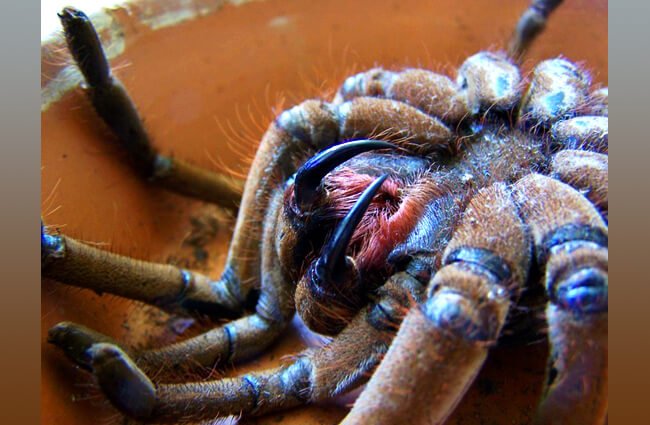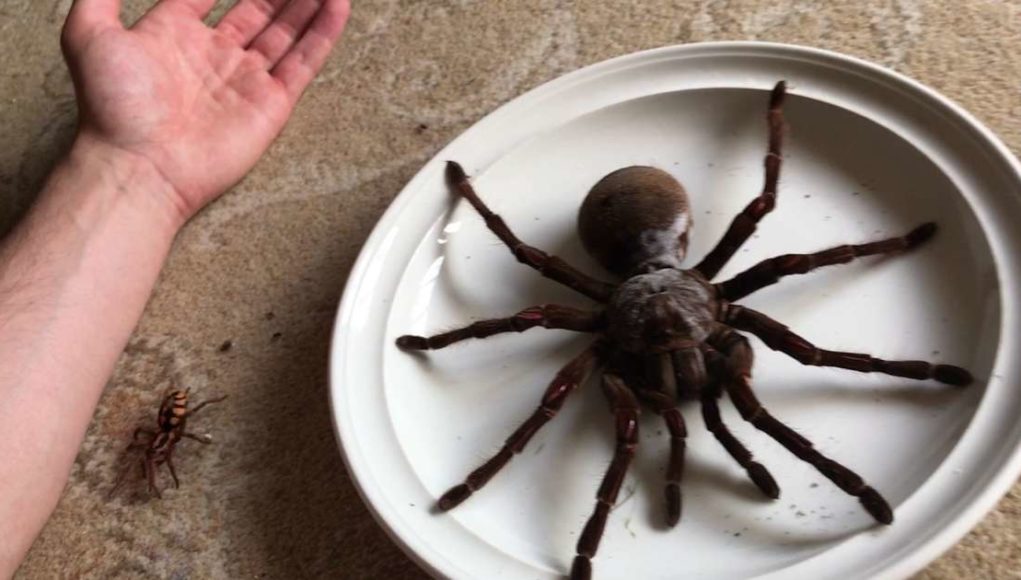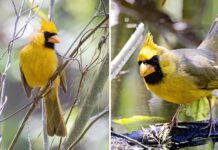The giant bird spider, or Goliath tarantula (Latin: Theraphosa blondi), is the largest tarantula in the world and got its name because of its enormous size and because it literally can eat whole birds.
However, as these spiders are so close to the ground, it is rare that they are actually capable of catching a live bird in the wild, but it has already happened.
The food of this spider consists mainly of other large arthropods, worms, amphibians and a variety of insects, rodents, frogs, toads, lizards and even snakes.
They may look weird, but experts say that tarantulas pose no great threat to humans and seldom attack a human being without any provocation.

However, these spiders attack people when they feel threatened. Therefore, it is best to be extremely careful when there is a rare opportunity to encounter a specimen in the wild.
The Goliath Tarantula is the largest spider ever, according to Guinness Book of Records. It is a fascinating species that is very unique in the wild. This species has some interesting features, such as the ability to regenerate limbs and its enormous size compared to other spiders.
This giant bird spider also has some strange features, such as the fact that females live much longer than males. Male specimens are usually only a few years old, while the females live for decades, if they can avoid dangers.
Unlike other spiders and tarantulas, females do not eat males during mating. Female animals mature within 3 to 6 years and have an average life expectancy of 15 to 25 years. The males die soon after maturity and only have a life expectancy of 3 to 6 years.
The female lays 100 to 200 eggs, from which the young spiders hatch within 6 to 8 weeks.
According to the Guinness Book of Records, the South American Goliath tarantula is the largest spider in the world. The legs can reach up to 30cm in length, and the body weight can be up to 180 grams.
The giant bird spiders are one of the few species of spider spiders that lack tibia spurs. These are usually on the first leg pair of most adult males.

The Goliath tarantula originates from the highland rainforest regions of northern South America: Suriname, Guyana, French Guiana, northern Brazil and southern Venezuela.
According to Wikipedia, the spiders have “fangs that are big enough (1.9 to 3.8 cm) to pierce a person’s skin. They carry poison in their teeth and are known to bite when threatened, but the poison is relatively harmless and its effects are similar to those of a wasp sting. Tarantulas generally only bite humans for self-defense, and these bites do not always cause poisoning. ”
World's Biggest Spider Gobbles Down an Unsuspecting Lizard
It’s 11 inches long and weighs nearly half a pound. But size isn’t the only advantage the Goliath birdeater has on its prey. Crazy Monster: Spiders gets close to this incredible tarantula and more spider superstars tonight at 8. http://bitly.com/MonsterSpiders
Posted by Smithsonian Channel on Wednesday, January 4, 2017
The second largest spider in the world is the giant crab spider. These spiders are also very tall, but they are more terrible because they are fast.
In southern Africa, a family of this species is known as a rain spider or lizard-eating spider. These spiders exist even in some parts of America and even in the United States.
They tend to live among rocks, barks and similar shelters, but human encounters often take place in sheds, garages and other rarely disturbed places.
In addition, giant crab spiders have an extremely strong poison, so it’s best to be careful when encountering one.

Although these spiders may seem scary, it is always important to remember that they are usually more afraid of us than we are of them.
If spiders do not feel threatened, they usually do not attack people and usually do their best to move away from you. Spiders are vital to the planet’s entire ecosystem and eliminate many insects and pests.
If you are not traveling to the remote corners of the world or living in one of the rare places where these species occur, you will rarely see any of these spiders outside captivity.






